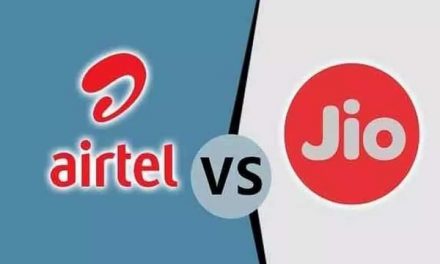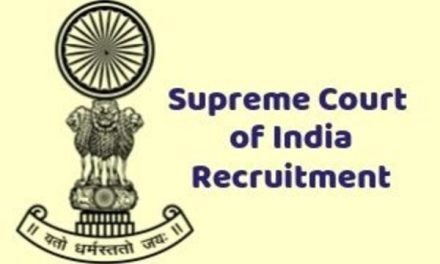PF ( Provident Fund ) or EPF is also called the Employee Provident Fund Scheme. It is one where the employees contribute a small portion of their remuneration i.e. 12% of their basic pay every month. A matching amount is contributed by the employer. Such a contribution, together, form a corpus. This is to be used to fund the employee’s retirement. EPF withdrawal by employees can, however, be done earlier itself i.e. during the course of their employment. Such circumstances have been elaborated later in the article.
Here, it would be relevant to mention that EPF organisation has made the allotment of UAN i.e. the Universal Account Number compulsory for all the employees covered under the PF Act. UAN would be linked to the employee’s EPF account. The UAN remains portable throughout the lifetime of an employee and there is no need to apply for EPF transfer at the time of changing jobs.
EPF WITHDRAWAL-
1. When can EPF be withdrawn
One may choose to withdraw EPF completely or partially. EPF can be completely withdrawn under any of the following circumstances:
a. When an individual retires from employment
b. When an individual remains unemployed for a period of 2 months or more. Here, it needs a mention that the fact that the individual is unemployed for more than 2 months has to be certified by a gazetted officer.
Further, complete withdrawal of EPF while switching over from one job to another without remaining unemployed for 2 months or more(i.e. During the interim period between changing jobs), will be against the PF rules and regulations and therefore illegal.
Partial withdrawal of EPF can be done under certain circumstances and subject to certain prescribed conditions which have been discussed in brief below:
- Marriage – Limit for withdrawal is Up to 50% of employee’s share of contribution to EPF & No. of years of service criteria should be 7 years.
- Other Conditions – For the marriage of self, son/daughter, brother/sister
- Education – Limit for withdrawal is Up to 50% of employee’s share of contribution to EPF & No. of years of service criteria should be 7 years.
- Other Conditions – For the education of either himself or his children after class 10
- Other Conditions – The asset i.e. land or the house should be in the name of the employee or spouse or Jointly.
- Other Conditions – i. The property should be registered in the name of the employee or spouse or jointly
ii. Withdrawal permitted subject to furnishing of requisite documents as called for by the EPFO relating to the housing loan availed,
iii. The accumulation in the member’s PF account (or together with the spouse), including the interest, has to be more than Rs 20,000.
- Other Conditions – The property should be registered in the name of the employee or spouse or jointly.
Procedure for EPF withdrawal-
Broadly, withdrawal of EPF can be done either by:
- Submission of a physical application for withdrawal
- Submission of an online application
1. Submission of a physical application
For this, one can download the new composite claim (Aadhar)/ composite claim form (Non-Aadhar).
The new composite claim form (Aadhar) can be filled and submitted to the respective jurisdictional EPFO office without the attestation of the employer whereas, the new composite claim form (Non-aadhaar) shall be filled and submitted with the attestation of the employer to the respective jurisdictional EPFO office.
One may also note, that in case of partial withdrawal of EPF amount by an employee for various circumstances as discussed in the above table, very recently, the requirement to furnish various certificates has been done away with and the option of self-certification has been introduced for the EPF subscribers.
2. Submission of an online application
Interestingly, the EPFO has very recently come up with the online facility of withdrawal which has rendered the entire process easier and less time-consuming. Prerequisite: To apply for withdrawal of EPF online through EPF Portal, make sure that the following conditions are met:
- UAN (Universal Account Number) is activated and the mobile number used for activating the UAN is in working condition
- UAN is linked with your KYC i.e. Aadhaar, PAN and bank details along with the IFSC code.
If the above conditions are met, then the requirement of attestation of the previous employer to carry out the process of withdrawal can be done away with.
EPF Withdrawal Rules before 5 years of Service-
EPF withdrawal before 5 years of continuous service attracts TDS on the withdrawal amount. However, if the withdrawal amount is less than ₹ 50,000, no TDS is deducted. In case you want to withdraw your funds before 5 years of service, you should keep the following EPF withdrawal rules in mind:
- As per the latest modification in ITR Forms 2 and 3, the assessee has to provide a detailed breakup of the entire amount deposited in PF account every year.
- This will help the Income Tax Department to assess whether the withdrawal made by you is taxable or not.
- The department will also check whether additional tax has to be paid by you after revaluation.
- EPF contribution is done in four parts – Employee’s contribution, employer’s contribution and interest on each deposit.
- If the employee has claimed exemption on EPF contribution for previous years as per Section 80-C, all four parts will be taxable.
- If the employee has not claimed exemption in the previous year on EPF, the employee’s contribution part will be exempted from tax at the time of withdrawal.
- The tax will depend on the income slab in which the employee fell for that year.
- The tax will be applicable in the year of withdrawal but the consideration will be done for each year.
EPF Withdrawal Rules after Retirement-
- As per the EPF Act, when a member retires at the age of 58 years, he has to claim for the final settlement.
- The total PF balance consists of both employee’s as well as the employer’s contribution.
- The member also becomes eligible for the EPS amount if he has served for a period of more than 10 years in continuation.
- In case the member has not completed 10 years of service at the time of retirement, he can withdraw the complete EPS amount along with his EPF.
- If he completes 10 years of service, the employee gets pension benefits after retirement.
- The withdrawal of corpus accumulated in the EPF account after retirement is completely tax-free.
- The interest earned on the EPF corpus after retirement is taxable.
- An employee who has registered at the EPF member portal can fill the form and claim his funds online.
- If the member does not withdraw funds for three years after retirement, he will have to pay tax on the interest earned.
Documents Required-
- The UAN (Universal Account Number) is a compulsory requirement. It can be obtained from the employer
- Bank account details need to be clearly given with the name as per the EPF account
- The bank account has to be in the name of provident fund holder as funds cannot be transferred to the third party when the holder is alive
- Personal information like father’s name and date of birth should match clearly with the identity proof
- The employer should submit the details to EPFO (Employee Provident Fund Organization) and register the exit of an employee from the organization. Date of joining and date of leaving needs to be clearly mentioned
Steps to apply for EPF withdrawal online:
Step 1- Sign in to the UAN Member Portal with your UAN and Password.
![]() Step 2- From the top menu bar, click on the ‘Online Services’ tab and select ‘Claim (Form-31, 19 & 10C)’ from the drop-down menu.
Step 2- From the top menu bar, click on the ‘Online Services’ tab and select ‘Claim (Form-31, 19 & 10C)’ from the drop-down menu.
![]()
Step 3- Member Details will be displayed on the screen. Enter the last 4 digits of your bank account and click on “Verify”
![]()
Step 4- Click on “Yes” to sign the certificate of undertaking and proceed further
![]()
Step 5- Now click on the “Proceed for Online Claim” option
Step 6- Select “PF Advance (Form 31)” to withdraw your funds online
![]()
Step 7 – A fresh section of the form will be opened from where you have to select the “Purpose for which advance is required”, the amount required and the employee’s address
It is worth noting that all options for which the employee is not eligible for withdrawal will be mentioned in red.
Step 8 – Tick on the certification and submit your application
Step 9 – You may have to submit scanned documents depending on the purpose for which you have filled the form
Step 10 – Your employer has to approve your withdrawal request after which the money will be withdrawn from your EPF account and deposited in the bank account mentioned at the time of filling the withdrawal form.
An SMS notification will be sent to your mobile number registered with EPFO. Once the claim is processed, the amount will be transferred into your bank account. The money usually gets credited within 15-20 days, although no formal time limit has been provided by the EPFO.












I have worked in Capital IQ for one year from 2003 to 2004. Can I withdraw/transfer online to the current employer through ONLINE?
i have resigned my job 4 months back and tried to withdraw my full amount
but able to withdraw partial amount only
when again apply for remaining amount, the claim is rejected stating no balance in account
pl guide me wht to do for withdrawing full amount?
respect sir / madam
my old company pf DATE OF ENDING DATE MANSATION ,
how to clam my amount.
Can i withdraw my PF money in the consecutive months
Hello. And Bye.